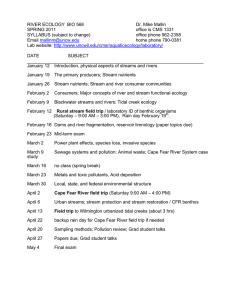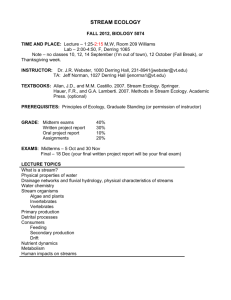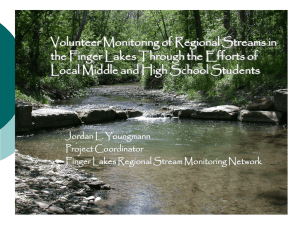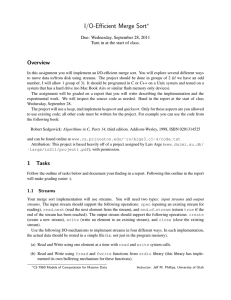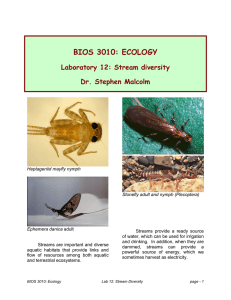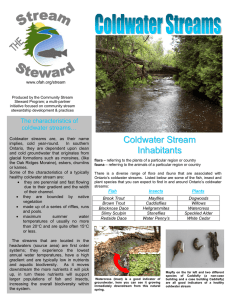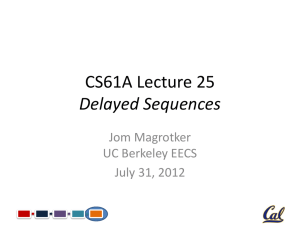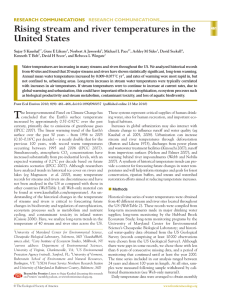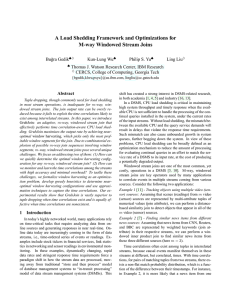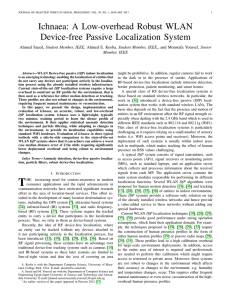STREAM ECOLOGY Most of the predicted growth will happen in urban Urbanization
advertisement
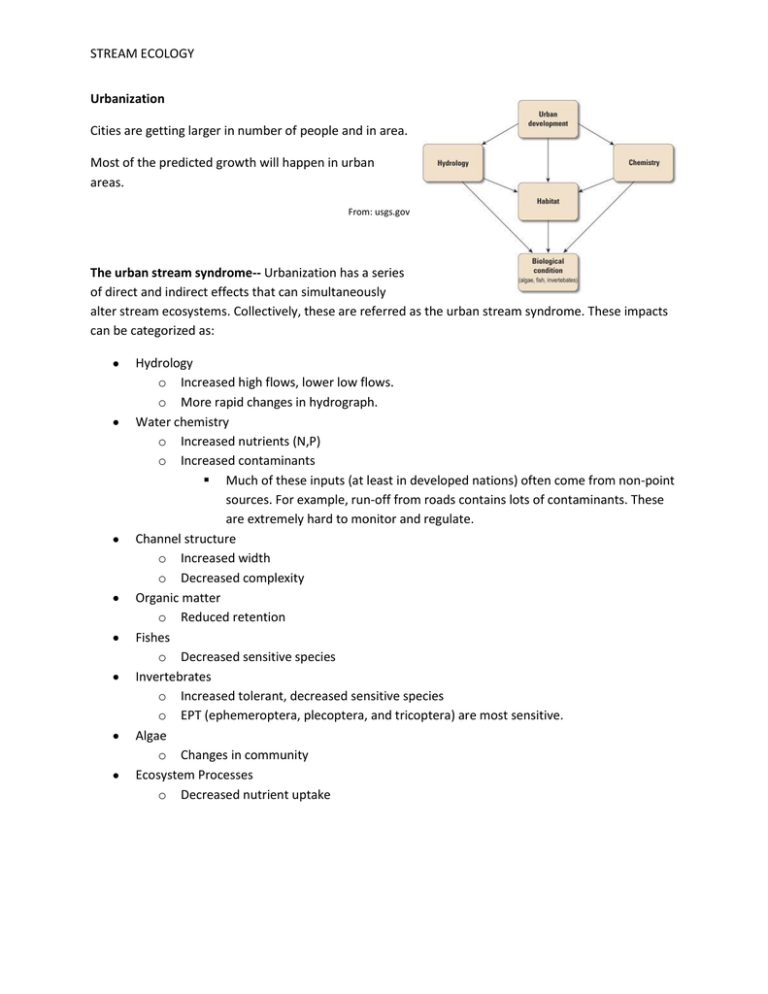
STREAM ECOLOGY Urbanization Cities are getting larger in number of people and in area. Most of the predicted growth will happen in urban areas. From: usgs.gov The urban stream syndrome-- Urbanization has a series of direct and indirect effects that can simultaneously alter stream ecosystems. Collectively, these are referred as the urban stream syndrome. These impacts can be categorized as: Hydrology o Increased high flows, lower low flows. o More rapid changes in hydrograph. Water chemistry o Increased nutrients (N,P) o Increased contaminants Much of these inputs (at least in developed nations) often come from non-point sources. For example, run-off from roads contains lots of contaminants. These are extremely hard to monitor and regulate. Channel structure o Increased width o Decreased complexity Organic matter o Reduced retention Fishes o Decreased sensitive species Invertebrates o Increased tolerant, decreased sensitive species o EPT (ephemeroptera, plecoptera, and tricoptera) are most sensitive. Algae o Changes in community Ecosystem Processes o Decreased nutrient uptake STREAM ECOLOGY Urbanization in Vancouver Vancouver is rapidly increasing in number of people as well as spreading. Spread is primarily south and east (mountains and ocean hem in development) The Lost Stream survey (1997) tried to use historical records to reconstruct how urbanization has impacted streams. Between 1860 and 1997, they estimate that 117 out of 779 streams have been completely “lost”. These streams don’t exist anymore (or exists under pavement).

